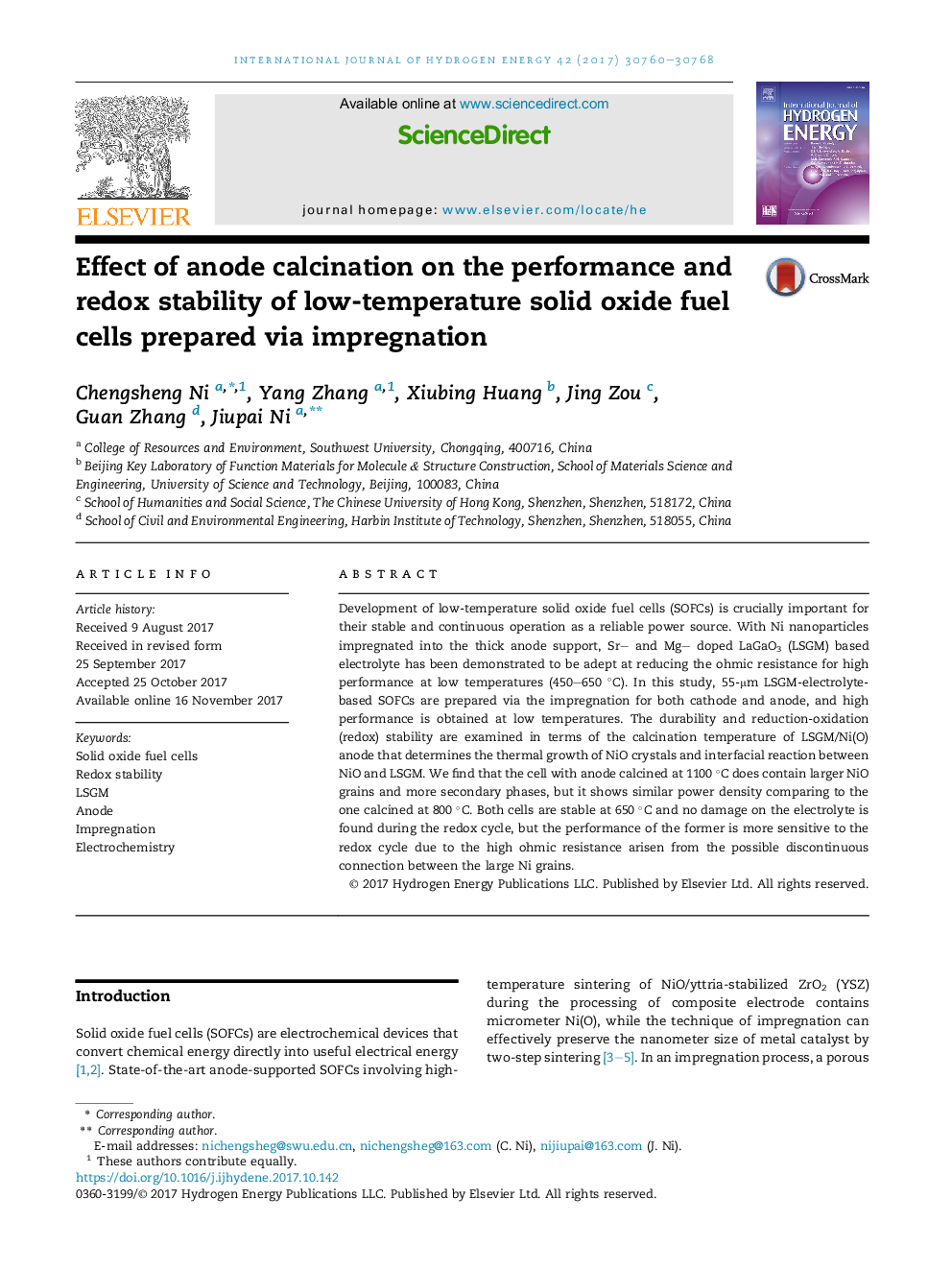| Article ID | Journal | Published Year | Pages | File Type |
|---|---|---|---|---|
| 7708765 | International Journal of Hydrogen Energy | 2017 | 9 Pages |
Abstract
Development of low-temperature solid oxide fuel cells (SOFCs) is crucially important for their stable and continuous operation as a reliable power source. With Ni nanoparticles impregnated into the thick anode support, Sr and Mg doped LaGaO3 (LSGM) based electrolyte has been demonstrated to be adept at reducing the ohmic resistance for high performance at low temperatures (450-650 °C). In this study, 55-μm LSGM-electrolyte-based SOFCs are prepared via the impregnation for both cathode and anode, and high performance is obtained at low temperatures. The durability and reduction-oxidation (redox) stability are examined in terms of the calcination temperature of LSGM/Ni(O) anode that determines the thermal growth of NiO crystals and interfacial reaction between NiO and LSGM. We find that the cell with anode calcined at 1100 °C does contain larger NiO grains and more secondary phases, but it shows similar power density comparing to the one calcined at 800 °C. Both cells are stable at 650 °C and no damage on the electrolyte is found during the redox cycle, but the performance of the former is more sensitive to the redox cycle due to the high ohmic resistance arisen from the possible discontinuous connection between the large Ni grains.
Related Topics
Physical Sciences and Engineering
Chemistry
Electrochemistry
Authors
Chengsheng Ni, Yang Zhang, Xiubing Huang, Jing Zou, Guan Zhang, Jiupai Ni,
